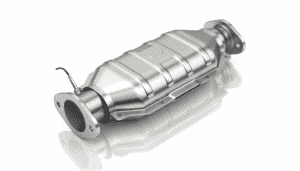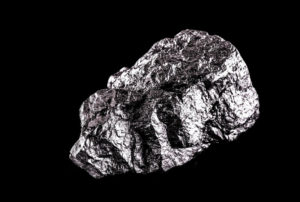What is a catalytic converter?
A catalytic converter is a device that helps to clean up the exhaust from an engine by converting harmful pollutants into less harmful ones. Platinum is one of the materials used in the construction of a catalytic converter.
The catalytic converter is a key part of the emission control system on most modern cars. It contains a ceramic honeycomb-like structure coated with a rare metal such as platinum or palladium.
When the exhaust gases flow through the converter, the metal catalyst helps break down the pollutants into carbon dioxide and water vapour, which are much less harmful to the environment. Most catalytic converters are designed to last the lifetime of a vehicle, but they can become damaged or clogged over time.
Precious metals used in catalytic converters
The precious metals used in catalytic converters are platinum, palladium, and rhodium.
Platinum is the most common, followed by palladium. Rhodium is the rarest of the three and is only used in high-performance converters.
What are the benefits of using platinum in catalytic converters?
The benefits of using platinum in catalytic converters are that it helps to reduce emissions from vehicles, which helps to improve air quality. It also helps to extend the life of the converter.
What are some of the other benefits of platinum?
Some of the other benefits of platinum include its high resistance to corrosion and its ability to withstand high temperatures. These properties make it an ideal material for use in catalytic converters.

Are there any drawbacks to using platinum in catalytic converters?
There are no real drawbacks to using platinum in catalytic converters, but it is an expensive material. This can increase the cost of manufacturing vehicles that have a catalytic converter installed.
Precious Metals in the automotive industry
The use of precious metals in catalytic converters is an important part of the automotive industry.
By using these metals, carmakers can help protect the environment and human health. The use of precious metals in catalytic converters is also beneficial to the economy.
The metals are expensive, but their use in catalytic converters helps to keep them from becoming scarce. This helps to protect the value of these resources and ensures that they will be available for future generations.
Recycling
The metals are then recycled back into the converter to continue the process. This recycling keeps the metals from ending up in landfills or being released into the environment.
The use of precious metals in catalytic converters is one way that carmakers can meet emissions standards. By using these metals, carmakers can reduce the amount of harmful emissions released into the atmosphere.
What happens if a catalytic converter fails?
If a catalytic converter fails, it can cause the vehicle to emit more harmful pollutants into the atmosphere. This can have a negative impact on air quality and the environment.
How can I tell if my catalytic converter is working properly?
There is no real way to tell if your catalytic converter is working properly, but it will usually be fairly obvious if it isn’t. The vehicle may start to emit more pollutants than usual, or the check engine light may come on.
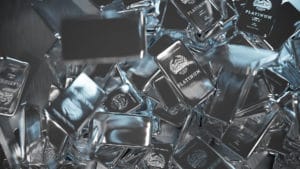
The value of Platinum
Platinum is a valuable metal that is used in a variety of applications.
Platinum also has a high resistance to corrosion and can withstand high temperatures, making it a reliable choice for these applications.
What other precious metals are used in catalytic converters?
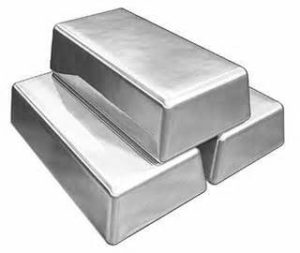 Silver
Silver
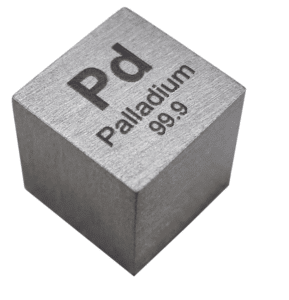 Palladium
Palladium
These metals are all effective catalysts and have properties that make them well-suited for this application.
Like platinum, they are all resistant to corrosion and can withstand high temperatures. They also help to reduce emissions from vehicles. Gold is the most expensive of these metals, followed by platinum and palladium. Silver is the least expensive.
What if my catalytic converter doesn’t have platinum in it?
If your catalytic converter doesn’t have platinum in it, it may not be as effective at reducing emissions.
This could impact air quality and the environment. It is important to make sure that your catalytic converter has a platinum-containing catalyst if you want to ensure that your vehicle is emitting the lowest possible levels of pollutants.
The Economy
The use of precious metals in catalytic converters is also beneficial to the economy.
The metals are expensive, but their use in catalytic converters helps to keep them from becoming scarce. This helps to protect the value of these resources and ensures that they will be available for future generations.
Investing in platinum and the car industry
Platinum is a key component of catalytic converters, and as such, the price of platinum has historically been closely linked to the health of the automotive industry.
In the global economy, when the automotive industry is healthy, platinum prices tend to rise.
Below are the Top 4 Precious Metal firms that we have chosen, as being amongst the most reputable Gold IRA companies in the industry.
Click here to read our reviews

|
The Bottom Line
Platinum is a valuable metal that is used in a variety of applications.
One of these applications is in catalytic converters for vehicles. Platinum is used in catalytic converters because it is an effective catalyst that can convert harmful pollutants into less harmful ones at high temperatures.
It also has a high resistance to corrosion and can withstand high temperatures, making it a reliable choice for this application. There are no real drawbacks to using platinum in catalytic converters, but it is an expensive material.
If your catalytic converter fails, you should take the vehicle to a mechanic and have it repaired or replaced. Failing to do so can result in increased emissions and possible damage to the environment.
This could impact air quality and the environment. It is important to make sure that your catalytic converter has a platinum-containing catalyst if you want to ensure that your vehicle is emitting the lowest possible levels of pollutants.
The amount of precious metal in a catalytic converter is important, as too little will not be effective, and too much will be expensive and wasteful. The metals are usually mixed with a ceramic compound before being embedded in the converter’s honeycomb-shaped substrate.
When a car’s exhaust passes through the converter, the precious metals promote a reaction that breaks down the harmful emissions.

